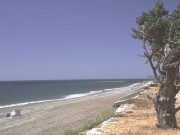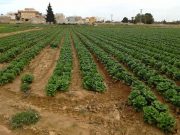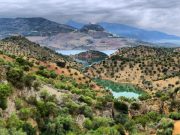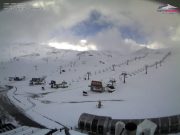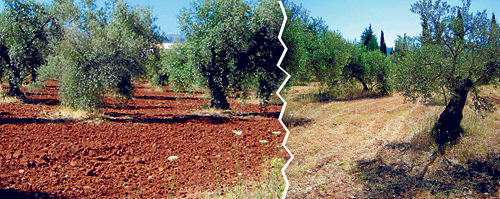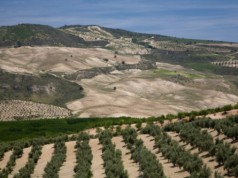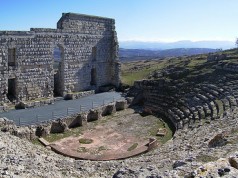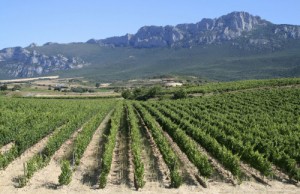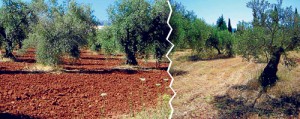
By Jamie MacDonald
TODAY the weather is hot, and dry, and on the next door finca a huge tractor is disc-harrowing the land.
An environmental disaster is being repeated.
Since the Moors were thrown out, many Spanish have failed to understand how to deal with the land and as a consequence, one of the most delicate and endangered environments in Europe is being desecrated.
No-one doubts that dry grasses and wild flowers are a fire hazard, and understandably people are worried about fire in the high summer and autumn.
But to tear up the land like this, turning it to dust – which even as I write, is being whipped up by the wind and carried away – is unforgivable. When the autumn rains come, there is nothing to
hold the soil together. It will wash into streams and be gone forever.
Paradoxically, the Spanish know that what they are doing is bad. Books on olive production show photos where each tree is standing on its own mound of earth, sometimes a metre high – scenes which are only too common round the Serrania de Ronda, where I live.
What we are really seeing is millions of tons of fertile soil eroded from between the trees.
And soil cannot be replaced, even in many lifetimes. Our local soil, terra rossa, was laid down in the Jurassic limestone and has leached out over 80 million years as the rock has dissolved.
Look at the simple implement the Spanish use for managing the soil, the mattock. It cuts the weeds, and at the same time tears the roots out along with the soil. Every time the mattock is used, the amount of soil diminishes.
When the rain comes, water can flow down the tiny gap at the side of every rootlet
And what is done with the weeds? They are burnt. How many Spanish do you know with a compost heap? It is just not customary behaviour.
Now, take a look at the English hoe. It slides just under the surface and cuts the plant at the roots, leaving it in position to maintain its structure then to rot and contribute to fertility.
If they would only mow the wild flowers and grasses, as I do on my plot, the perennial roots would be left in place to anchor the soil, and provide what is called ‘reverse capillary action’.
When the rain comes, water can flow down the tiny gap at the side of every rootlet.
Water also flows down the natural tunnels made by voles and by ants and beetles and cicadas, which can all survive if their habitat is not destroyed by harrowing. The result? I can walk on my land a few days after heavy rain, when the next door plot has pools of standing water, and deep gullies on the steeper areas.
The academics know all this. It is studied in universities in Spain and beyond, and UNESCO write learned articles on it.
They describe in detail how to manage land, both flat and on slopes. They show how using the discarded olive leaves as fertiliser increases the yield. But it seems no one is listening.
Is it too late for change ?






